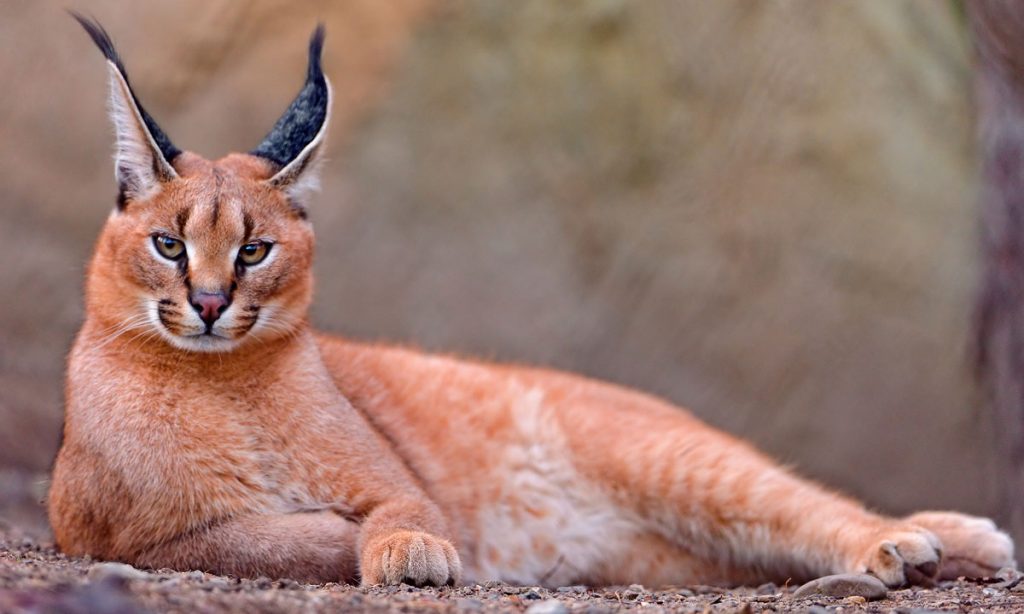
Big cats, like tigers, lions, leopards, and jaguars are powerful, visually stunning and intimidating predators — so it’s completely understandable that they steal much of the limelight. At the same time, small wild cats garner attention as unmatched hunters, not all that different than the cunning, domesticated felines we share our homes with.
But mid-sized wild cats—those that fall between about 10 and 60 pounds—don’t get nearly enough attention or credit, combining the creative hunting strategies of their smaller cousins with the grace and strength of bigger cats.
These often overlooked and underestimated predators are among the planet’s most skilled carnivores, in spite of their awkward weight class.
Servals: Death on Stilts
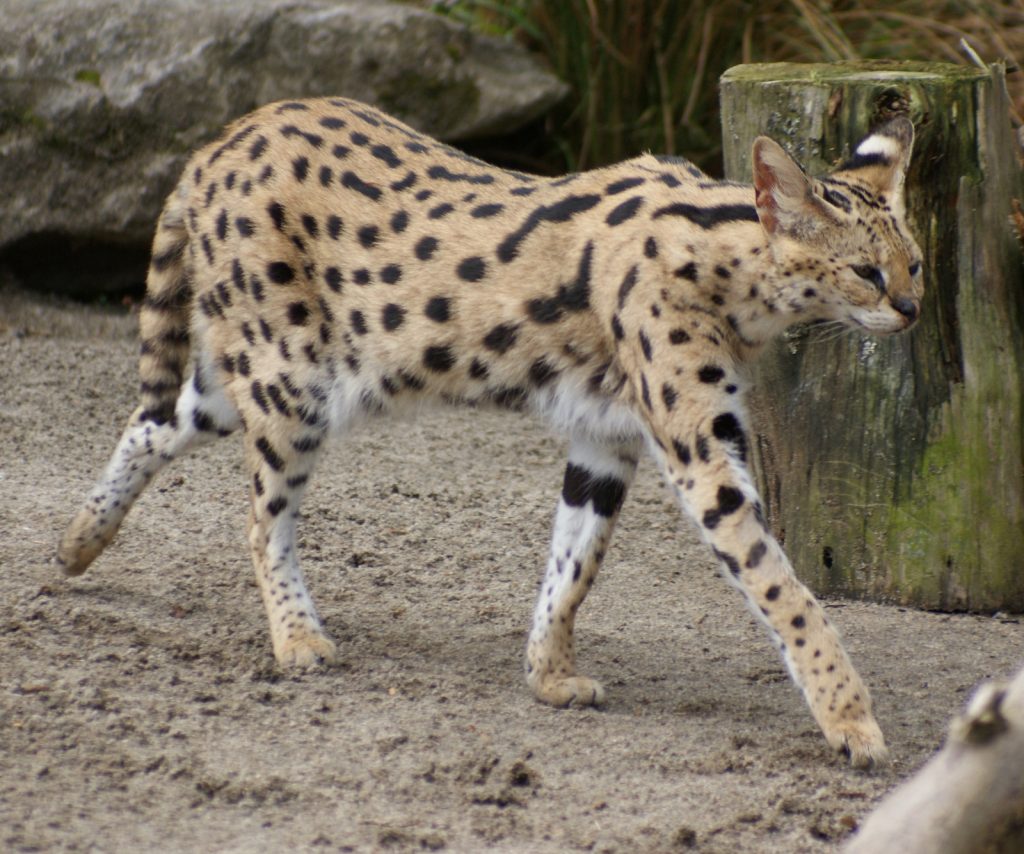
Servals (Leptailurus serval) are perhaps the most familiar of the mid-sized wild cats, being part of the hybrid parentage of the Savannah cat breed. These cheetah-like cats can weigh up to 40 pounds, and with their characteristically long limbs (longer than any other cat for their body size), can reach 2 feet at the shoulder. Servals are relatively common throughout grasslands and wetlands in sub-Saharan Africa, where they put those gangly legs to good use.
While servals are capable of taking down larger prey like waterfowl or small antelope, they’ve developed a specialized method of catching their preferred food: rats. Servals use their incredibly acute hearing—aided by their swiveling, satellite dish-like ears—to tune in to the movements of rodents in tall grass or reeds. After pinpointing a target, servals pounce, launching themselves more than six feet upwards with their spring-loaded legs. Holding their front paws close to their chest, they fall back to earth, extending their claws at the last second to pummel the doomed rat with a single, stupefying, ultimately fatal strike.
Caracals: Airborne Claws
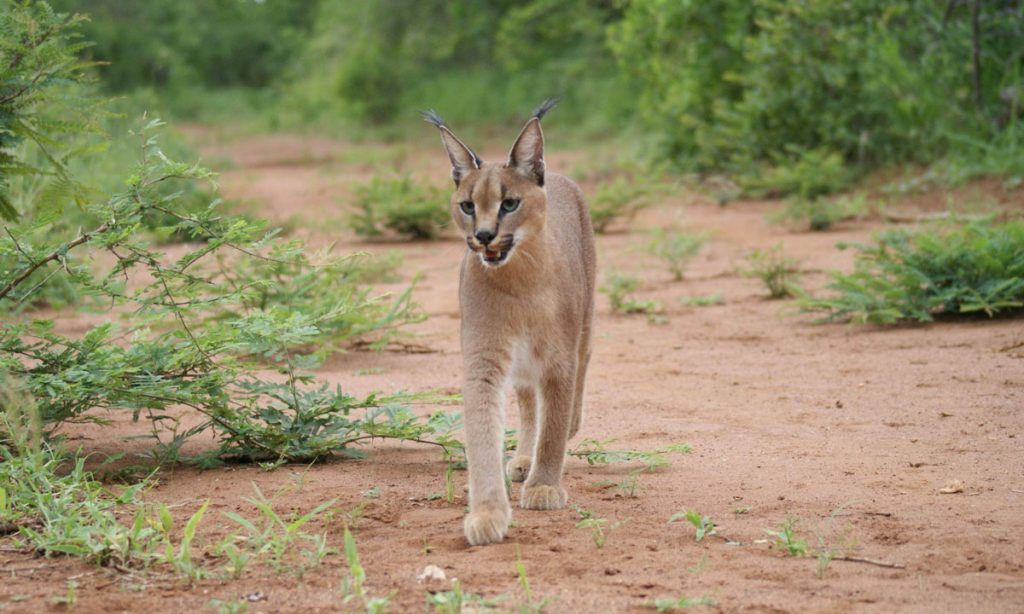
A close relative of the serval, the caracal (Caracal caracal) is a rust-colored cat that ranges over much of the same territory as the serval, but can also be found in North Africa, the Middle East, and into Western Asia and India. Roughly the same bulk as a serval, these muscular predators are bit more stockily built. Caracals have also been called red or Persian lynxes due to their conspicuous black tufts on their ears, though caracals are actually not very closely related to true lynxes.
Unlike the serval, caracals tend to shy away from wetlands and boggy areas, preferring more arid regions to prowl for food.
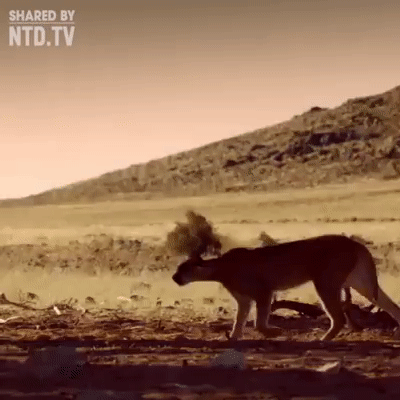
However, they do have something in common with their spotted cousins: a mind-blowing vertical leap used in a dramatic hunting strategy. Caracals have a varied diet that mostly includes small to medium-sized mammals like rats, rabbits, and small goats and antelope, but they also have a taste for birds. Many caracals opt to nab their poultry in a seemingly difficult venue—the air. The caracal is the wide receiver of the cat world, and can explosively jump ten feet straight up, intercepting and grappling birds as they fly overhead.
Clouded Leopards: Beauty and the Teeth

If you were to ever encounter a clouded leopard (Neofelis) in the mountainous forests of Southeast Asia, you should consider yourself exceptionally lucky—the roughly 25- to 50-pound cats are among the most secretive and poorly-understood members of the cat family. Clouded leopards are now understood to be two distinct species: a mainland species found in fragmented habitat across the eastern Himalayas, southern China, Myanmar, and Malaysia, and the Sundaland clouded leopard on the islands of Sumatra and Borneo.
These regal and enigmatic animals are some of the strongest climbers among cats, spending much of their time quietly slinking along rainforest branches in a midnight quest for prey. Their targets are typically tree-dwelling animals, like primates or pangolins, but clouded leopards will also kill and eat small deer.
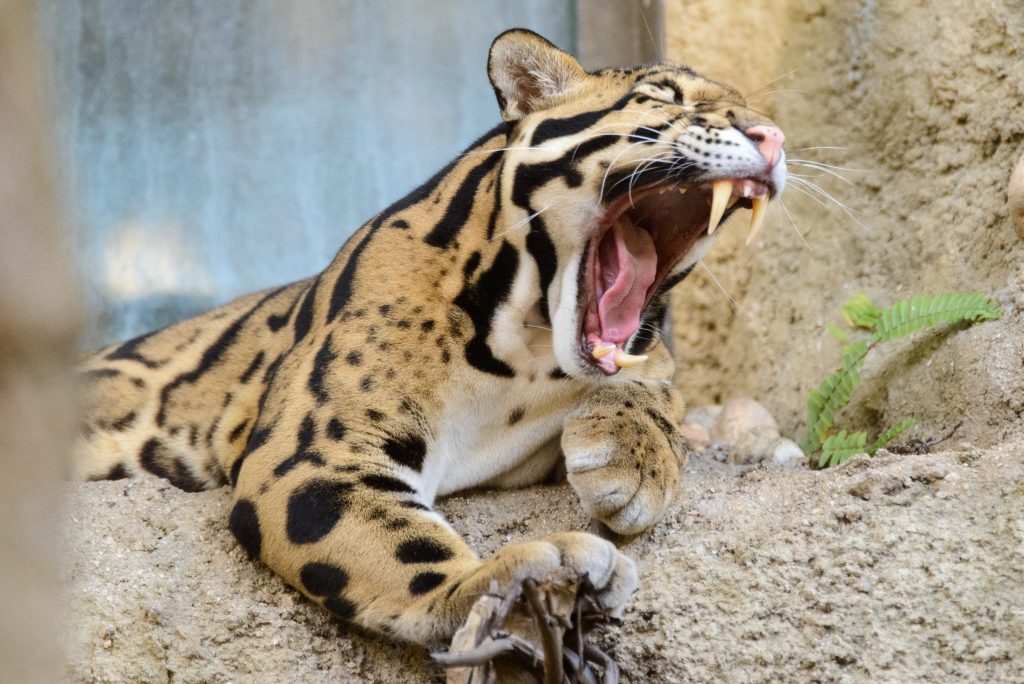
Clouded leopards also have the distinction of possessing the proportionally longest canine teeth found in modern felines, making them somewhat like miniature sabertooth cats. However, unlike true sabertooths, both sets of the clouded leopard’s canines—top and bottom—are noticeably dagger-like. In their perilous, arboreal habitat, those long fangs undoubtedly provide an advantage in holding onto struggling prey.
As their name suggests, clouded leopards are a part of the “big cat”, Pantherinae subfamily of cats, and are close relatives of leopards, lions, tigers, and the like, in contrast with almost all other species of mid-sized wild cat. However, clouded leopards are much smaller than these roaring relatives, and are an early evolutionary offshoot of the group, with many characteristics similar to small cats (like the ability to purr).
Clouded leopards have always been considered rare, but their numbers are declining further still due to habitat loss and poaching for their unique, attractive coat.
The Lynx: Ghost of the Northern Woods

Of the four species of lynx and bobcat, the Eurasian lynx (Lynx lynx) is the largest, and perhaps the most impressive of the bunch. These burly predators are the biggest cats on the list, and while most individuals top out at 50 or 60 pounds, some particularly beefy males can approach 100 pounds, pushing the definitions of the “mid-sized” cat category.
Eurasian lynxes roam the cold, lonely expanses of Northern and Eastern Europe, Russia, and interior China. Like its North American and Iberian close relatives, the Eurasian lynx is notoriously elusive, silently hunting across vast territories of forest and only rarely allowing themselves to be seen by humans. Lynx have uniquely adapted feet for treading in deep snow; their furry paws are huge and broad, acting like snowshoes and spreading out their weight so they won’t sink.
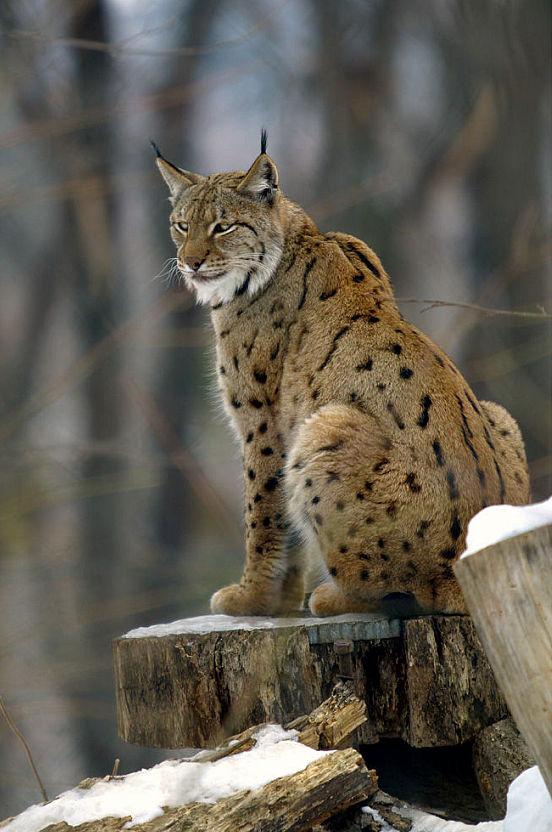
These cats are fantastically effective predators, and can seemingly take on anything they find in their chilly, boreal home. They tackle standard fare like hares, rodents, weasels, and fowl, but will unflinchingly stalk and successfully attack boars, young moose, and deer. In fact, Eurasian lynxes are the only lynx species known to regularly hunt hoofed animals—a habit more attributed to the “big cat” species. Unfathomably strong for their size, Eurasian lynxes are known to take down elk in excess of 450 pounds.
Fishing Cats: Kings of the Marsh
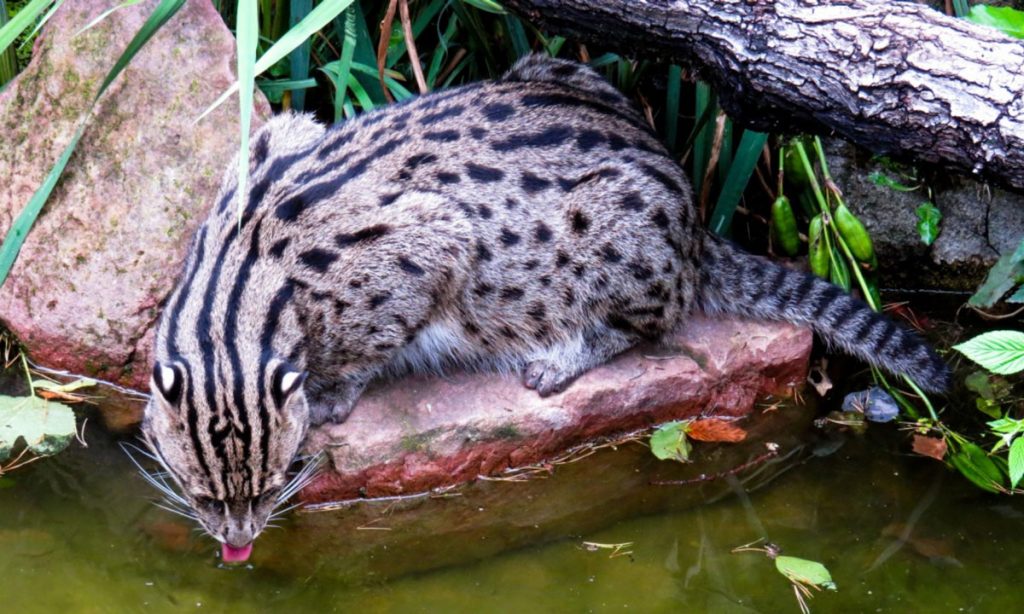
Your pet cat may loathe the water, but the fishing cat (Prionailurus viverrinus) is perfectly at home swimming in swamps and mangroves throughout India and Southeast Asia.
Fishing cats are actually odd among cats for a number of other reasons. The nocturnal, roughly 15- to 35-pound creatures have curiously narrowly-spaced eyes set in a long, low skull perched on a thick and muscular neck. Their tail is decidedly short, but not bobbed like that of the lynxes.
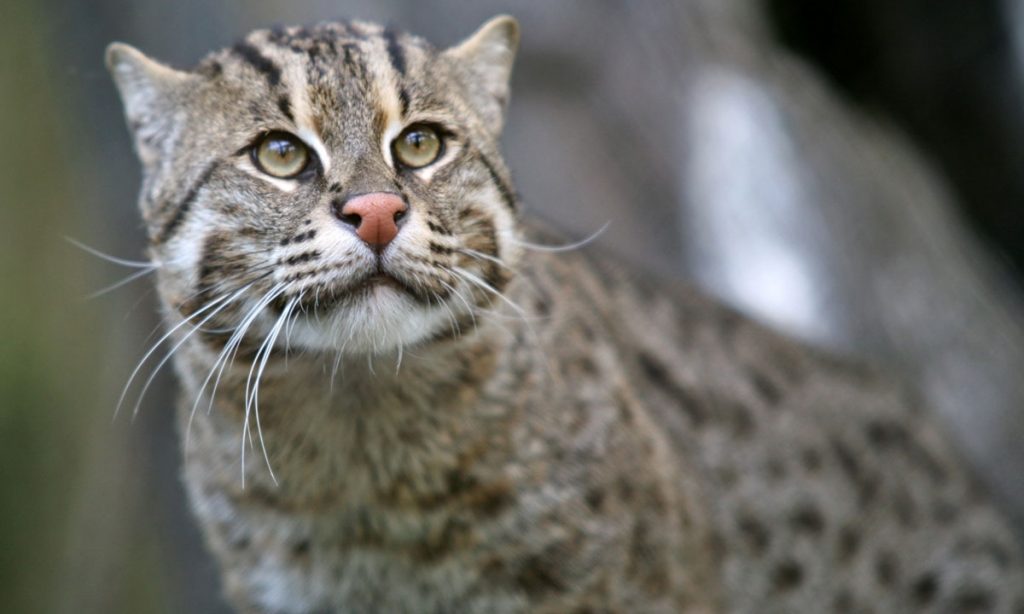
They also have a number of adaptations for a life spent in and around water. Their feet are partially webbed, and they sport a water-resistant double coat. Their chest is deep and outfitted with strong muscles that power short, robust legs as they paddle around waterways.
These cats are fish-eating specialists, with almost all of their diet consisting of a combination of fish, crustaceans, frogs, and salamanders. Some prey is speared right from the water’s edge on perpetually-extended claws (an adaptation for fishing), but the fishing cat isn’t above meeting its scaly dinner on its own turf. Amazingly, fishing cats routinely dive deep under the surface to catch fish, gripping them with their fish hook claws.
Mid-sized cats straddle a unique niche in many of their ecosystems, not small enough to compete with predators under several pounds, but not really big enough to compete with apex predators like lions and jaguars, which can be several hundred pounds. Many mid-sized cats—like lynxes and caracals—are jacks of all trades, able to exploit a huge range of habitats and prey. It’s a level of flexibility that deserves far more admiration.